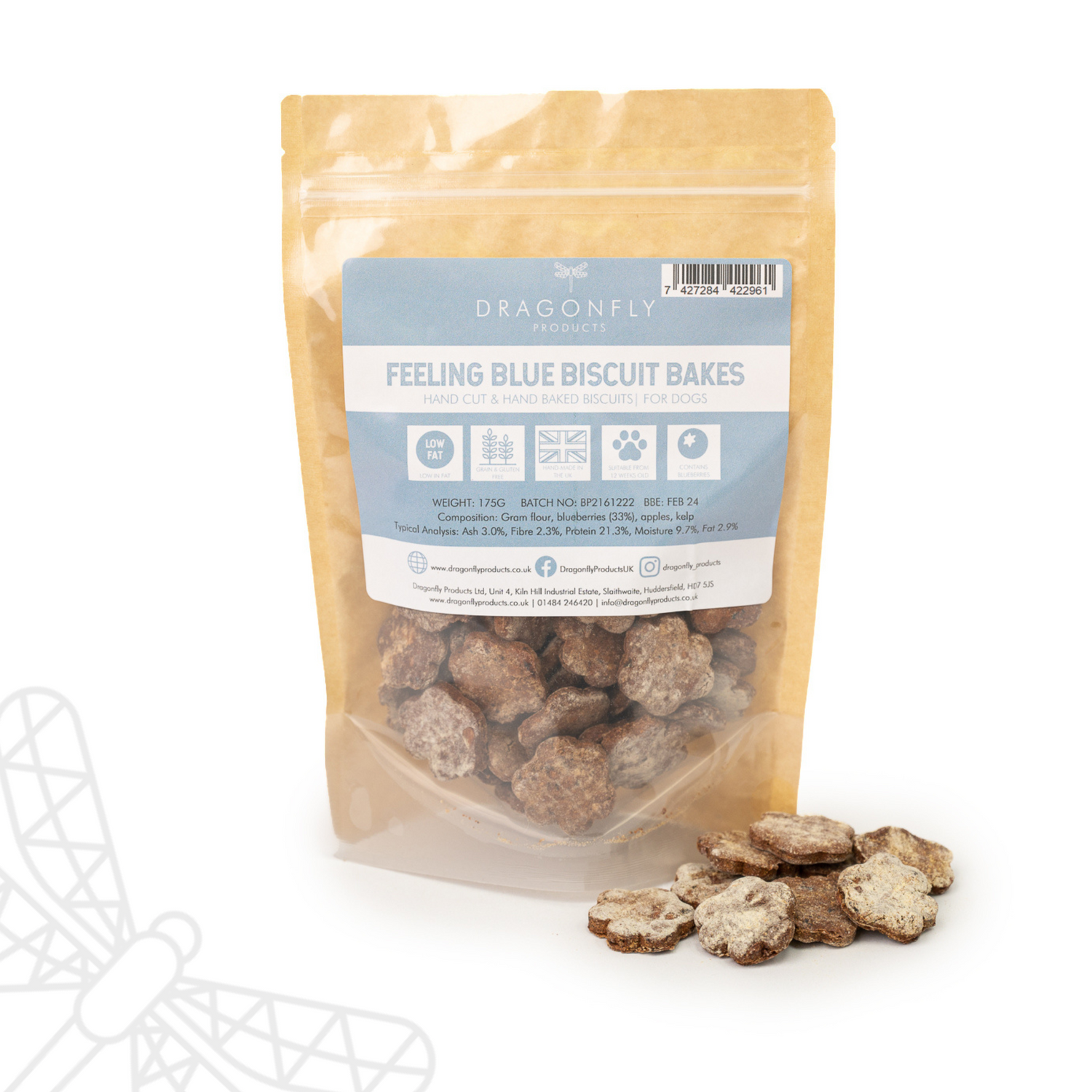
Managing yeast infections in dogs
It’s tough to watch your dog struggle with constant itching, bad smells, and discomfort from a yeast infection. These infections can be stubborn and hard to treat, leaving you unsure what to do next.
Understanding what causes yeast infections and how to treat them can make all the difference in helping your dog feel better.
Table of Contents
- What are yeast infections?
- What are yeast infections in dogs?
- What are the types of yeast infections in dogs?
- What causes yeast infections in dogs?
- What are the common symptoms of yeast infections in dogs?
- What are the differences between ear mites and yeast infections?
- How are yeast infections in dogs treated?
- Is there a vaccine for dogs with yeast infections?
- Can a dog's diet cause yeast infections?
- Which dog breeds are more prone to yeast infections?
- How to prevent a dog from getting a yeast infection?
- What home remedies can help treat yeast infections in dogs?
- How long does it take a dog to recover from a yeast infection?
- Can a yeast infection in dogs spread to humans?
What are yeast infections?
Yeast infections, or candidiasis, are fungal infections caused primarily by the Candida species, with Candida albicans being the most common culprit. This fungus is naturally found in small amounts in areas like the mouth, intestines, and the skin. When the balance of microorganisms in these areas is disturbed or the immune system is weakened, Candida can grow excessively, leading to an infection.
What are yeast infections in dogs?
Yeast infections in dogs occur when the natural yeast grows too much, which normally lives in small amounts in your dog's intestines. Yeast is a fungus, and when it overgrows, it can cause problems like itchy skin, ear infections, and other uncomfortable symptoms. It's a fungal infection that can make your dog uncomfortable if not treated properly.
What are the types of yeast infections in dogs?
Yeast infections in dogs commonly occur in areas where the environment is warm and moist. These are the common types of yeast infections you might encounter:
- Ear Yeast Infections: These are one of the most common yeast infections in dogs, causing itchiness, redness, a strong odor, and a brown, waxy discharge in the ears.
- Paw Yeast Infections: Yeast can thrive in the moist environment between a dog’s paw pads, leading to itchiness, redness, and a musty smell. Dogs might chew or lick their paws excessively when they have a yeast infection.
- Skin Yeast Infections: These can occur in any skin folds, such as those found in breeds like Bulldogs or Shar-Peis, or under heavy coats in hot weather. Symptoms include red and irritated skin, itching, and a distinct smell.
- Yeast Dermatitis: This is a more widespread skin condition that occurs when yeast proliferates on the dog’s skin, often due to an underlying issue like allergies or a compromised immune system.
Understanding the type of yeast infection your dog has can help you treat it more effectively.
What causes yeast infections in dogs?
Yeast infections in dogs occur due to an imbalance in their gut. Normally, your dog has good bacteria that keep the yeast under control. But when something disrupts this balance—like antibiotics, a poor diet, or a weakened immune system—the yeast can start to grow too much. Other factors like high levels of sugar or carbs in their diet, exposure to heavy metals, or even stress can also contribute to yeast infections. Basically, when the balance is off, the yeast takes over and causes problems.
What are the common symptoms of yeast infections in dogs?
Yeast infections in dogs typically manifest through different symptoms, which can vary depending on the area affected. Common signs include:
- Chewing or licking paws
- Red, itchy skin
- Hair loss, especially on the tail or upper back
- Dark, rusty-red hair between the toes
- Blackened, thickened skin
- Foul odor, often described as “musty”
- Greasy, flaky skin
- Ear infections with discharge or head shaking
- Diarrhoea or digestive issues
- Greyish or rusty color around the genitals
If you notice your dog showing several of these symptoms, especially if they are severe, it’s important to seek advice from a holistic vet, specialist pet store (like Dragonfly) or a canine nutritionist. Signs like persistent ear infections, severe itching, hair loss, or a bad smell can indicate a yeast infection that needs prompt treatment to prevent it from worsening and causing more discomfort for your dog.
What are the differences between ear mites and yeast infections?
Ear mites and yeast infections in dogs can look similar, but they have different causes and treatments. Ear mites are tiny parasites that grow in your dog’s ear canal, causing intense itching, scratching, and dark, coffee-ground-like debris in the ears. They are contagious and can spread easily between pets. On the other hand, yeast infections are caused by an overgrowth of yeast, which is a type of fungus that normally lives in small amounts on your dog’s skin and in their ears. Yeast infections often produce a bad odor, along with thick, brown or yellowish discharge, and can also cause itching and redness. Unlike ear mites, yeast infections are not contagious and are usually due to an internal imbalance, like diet or immune system issues.
How are yeast infections in dogs treated?
- Dietary Changes: Switching to a low-carb, raw or cooked diet without grains can help starve the yeast and reduce its growth.
- Antifungal Medications: These are used to directly treat the yeast infection, either through topical creams, shampoos, or oral medications.
- Probiotics: Adding probiotics (such as kefir) to your dog’s diet aids in restoring the healthy balance of good bacteria in their gut, which can help control yeast overgrowth.
- Digestive Enzymes: These enzymes can break down the protective biofilm around yeast cells, making them easier to eliminate.
- Avoidance of Triggers: Reducing exposure to heavy metals, chemicals, and food or environmental allergens that can contribute to yeast overgrowth.
Is there a vaccine for dogs with yeast infections?
There is currently no vaccine available for yeast infections in dogs. Yeast infections are typically caused by an imbalance in the dog's system rather than something that can be prevented by vaccination.
Can a dog's diet cause yeast infections?
Yes, a dog's diet can play a big role in causing yeast infections. Yeast feeds on sugars and carbohydrates, so if your dog’s diet is high in starchy foods like grains, potatoes, or sweet potatoes, it can create an environment where yeast can grow out of control. This is why diets that are low in carbohydrates, such as raw or specially prepared cooked diets, are often recommended to help manage or prevent yeast infections. By reducing the amount of sugar and carbs your dog consumes, you can help keep yeast levels in check and support your dog’s overall health.
Which dog breeds are more prone to yeast infections?
There are certain dog breeds that are more susceptible to yeast infections due to their physical characteristics and genetic predispositions. These are some of the particularly susceptible breeds:
- Cocker Spaniels
- Basset Hounds
- Bulldogs
- Labrador Retrievers
- Shih Tzus
- German Shepherds
- Poodles
- West Highland White Terrier
- Shar-Pei
These breeds may require more frequent grooming and care to prevent yeast infections.
How to prevent a dog from getting a yeast infection?
- Feed a balanced, low-carb diet: Avoid high-carbohydrate foods that can fuel yeast growth.
- Keep ears dry and clean: Regularly clean and dry your dog’s ears, especially after swimming or baths.
- Groom regularly: Regular brushing and bathing can help keep your dog’s skin clean and free of excess moisture.
- Avoid unnecessary antibiotics: Use antibiotics only when necessary to not disturb the balance of good bacteria.
- Provide probiotics: Adding probiotics to your dog’s diet can support a healthy gut and prevent yeast overgrowth.
- Limit exposure to heavy metals and chemicals: Choose organic foods and avoid products with harmful chemicals to reduce the risk of yeast-promoting toxins.
-
Monitor and manage allergies: Addressing any allergies your dog has can help prevent the conditions that allow yeast to thrive.
What home remedies can help treat yeast infections in dogs?
Here are some simple home remedies that can help manage yeast infections in dogs:
- Coconut Oil: Apply coconut oil directly to the affected areas. Its antifungal properties can help reduce yeast growth and soothe itchy skin.
- Apple Cider Vinegar Rinse: Mix equal parts apple cider vinegar and water, then use it to rinse your dog’s coat. This can help restore the skin’s natural pH and combat yeast.
- Yogurt: Adding plain, unsweetened natural yogurt to your dog’s diet can provide beneficial probiotics that help balance gut bacteria and control yeast overgrowth.
- Kefir: Add frozen kefir or kefir water to your dog's food to provide beneficial pre and probics that help balance gut bacteria and control yeast overgrowth. Choose unflavoured kefir for yeast infections - you can also choose to make your own kefir.
- Aloe Vera: Apply aloe vera gel to the affected areas to soothe itching and irritation. Ensure it’s free from added chemicals or preservatives that could harm your dog.
- Herbal Teas: Use cooled herbal teas, like chamomile or green tea, as a rinse for itchy skin. These teas have natural anti-inflammatory and antifungal properties.
- Targeted Supplement: Use a supplement specifically for targeting yeast imbalance to support your dog's system alongside dietary changes.
How long does it take a dog to recover from a yeast infection?
The recovery time for a dog with a yeast infection varies on the severity of the infection and how quickly treatment is started.
Mild cases might start to improve within a week or two with proper treatment, but severe infections can take several weeks or even months to fully resolve.
Can a yeast infection in dogs spread to humans?
No, a yeast infection in dogs cannot spread to humans. Yeast infections in dogs are an internal issue related to the dog’s own body balance and are not contagious to humans or other pets.
Taking care of a dog with a yeast infection can be tough, but with the right steps, you can help your dog feel better. Understanding what causes yeast infections, spotting the signs early, and using treatments can make a big difference.
For any further help and advice please contact us on 01484 246420 and why not join our social media channels and online community on Instagram, Facebook or YouTube.
With Wags and Woofs,
Laura, Dolly & Reggie





